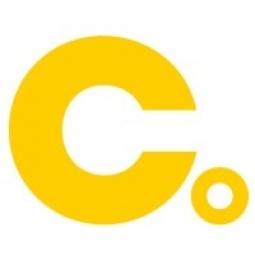公司规模
Mid-size Company
地区
- America
国家
- United States
产品
- CensorNet’s Secure Web Gateway
技术栈
- Web Proxy Server
- Cloud-based Database
实施规模
- Enterprise-wide Deployment
影响指标
- Productivity Improvements
- Customer Satisfaction
技术
- 网络安全和隐私 - 云安全
适用行业
- 医疗保健和医院
适用功能
- 商业运营
用例
- 网络安全
服务
- 云规划/设计/实施服务
关于客户
塞缪尔·西蒙兹纪念医院 (SSMH) 位于阿拉斯加北坡的巴罗,位于北极圈以北 360 英里处 - 是美国最北端的城市。最初的医院建于 1963 年,为比华盛顿州面积更大的居民提供关键的医疗服务。新的医院大楼面积为 100,000 平方英尺,于 2013 年开放,比原来的医院大楼大四倍,为患者提供更广泛的服务。SSMH 由非营利性北极坡原住民协会 (ASNA) 代表印第安人健康服务局管理。巴罗约 61% 的人口是因纽皮特人,医院的主要目标是为北极坡社区提供文化敏感的优质医疗服务,并于最近获得了联合委员会的金印章认证。
挑战
塞缪尔·西蒙兹纪念医院 (SSMH) 位于阿拉斯加北坡巴罗的一个偏远地区,距离北极圈以北 360 英里。该医院建于 1963 年,为比华盛顿州面积更大的地区的居民提供关键的医疗服务。该医院的主要目标是为北极坡社区提供文化敏感的优质医疗服务。医院的重建为更新技术设备提供了绝佳的机会。挑战在于在这个偏远地区提供有效的网络过滤,以确保医院遵守《健康保险流通与责任法案》(HIPAA)。这可以保护健康信息的隐私和安全,从而保证患者和员工的隐私。医院的偏远位置让人们比平时更容易将互联网用于与工作无关的活动。
解决方案
自 2005 年以来,CensorNet 的网络安全和内容过滤软件一直在为原医院提供无缝安全的互联网访问,SSMH 毫不犹豫地在新地点继续使用该解决方案。CensorNet Professional(现为 CensorNet Secure Web Gateway)从第一天起就为 SSMH 提供了以下主要优势:该软件有助于确保所有互联网使用均符合 HIPAA。广泛的网络访问控制和报告功能提高了互联网安全性并提高了员工的工作效率。该软件充当网络代理缓存,通过降低带宽要求来缓解卫星连接固有的低速问题。通过阻止或限制对带宽密集型下载或应用程序的访问,速度进一步提高,数据使用成本也降低。可靠性极佳,每年只需致电 CensorNet 技术支持一两次。偏远的位置(巴罗没有外部道路通道)和极地气候意味着 SSMH 需要自给自足。
运营影响

Case Study missing?
Start adding your own!
Register with your work email and create a new case study profile for your business.
相关案例.

Case Study
Hospital Inventory Management
The hospital supply chain team is responsible for ensuring that the right medical supplies are readily available to clinicians when and where needed, and to do so in the most efficient manner possible. However, many of the systems and processes in use at the cancer center for supply chain management were not best suited to support these goals. Barcoding technology, a commonly used method for inventory management of medical supplies, is labor intensive, time consuming, does not provide real-time visibility into inventory levels and can be prone to error. Consequently, the lack of accurate and real-time visibility into inventory levels across multiple supply rooms in multiple hospital facilities creates additional inefficiency in the system causing over-ordering, hoarding, and wasted supplies. Other sources of waste and cost were also identified as candidates for improvement. Existing systems and processes did not provide adequate security for high-cost inventory within the hospital, which was another driver of cost. A lack of visibility into expiration dates for supplies resulted in supplies being wasted due to past expiry dates. Storage of supplies was also a key consideration given the location of the cancer center’s facilities in a dense urban setting, where space is always at a premium. In order to address the challenges outlined above, the hospital sought a solution that would provide real-time inventory information with high levels of accuracy, reduce the level of manual effort required and enable data driven decision making to ensure that the right supplies were readily available to clinicians in the right location at the right time.

Case Study
Gas Pipeline Monitoring System for Hospitals
This system integrator focuses on providing centralized gas pipeline monitoring systems for hospitals. The service they provide makes it possible for hospitals to reduce both maintenance and labor costs. Since hospitals may not have an existing network suitable for this type of system, GPRS communication provides an easy and ready-to-use solution for remote, distributed monitoring systems System Requirements - GPRS communication - Seamless connection with SCADA software - Simple, front-end control capability - Expandable I/O channels - Combine AI, DI, and DO channels

Case Study
Driving Digital Transformations for Vitro Diagnostic Medical Devices
Diagnostic devices play a vital role in helping to improve healthcare delivery. In fact, an estimated 60 percent of the world’s medical decisions are made with support from in vitrodiagnostics (IVD) solutions, such as those provided by Roche Diagnostics, an industry leader. As the demand for medical diagnostic services grows rapidly in hospitals and clinics across China, so does the market for IVD solutions. In addition, the typically high cost of these diagnostic devices means that comprehensive post-sales services are needed. Wanteed to improve three portions of thr IVD:1. Remotely monitor and manage IVD devices as fixed assets.2. Optimizing device availability with predictive maintenance.3. Recommending the best IVD solution for a customer’s needs.

Case Study
HaemoCloud Global Blood Management System
1) Deliver a connected digital product system to protect and increase the differentiated value of Haemonetics blood and plasma solutions. 2) Improve patient outcomes by increasing the efficiency of blood supply flows. 3) Navigate and satisfy a complex web of global regulatory compliance requirements. 4) Reduce costly and labor-intensive maintenance procedures.

Case Study
Cloud-based healthcare solution for Royal Philips
Royal Philips wanted to launch its cloud-based healthcare solution HealthSuite Digital Platform in China to deliver services to help cope with challenges related to urbanization and population growth. Philips wanted to achieve this goal by combining mobile, cloud computing and big data technologies. To bring this platform and product to market, Philips required cloud computing and local technical service capabilities in China, in addition to a flexible IT infrastructure that could handle user requests.








